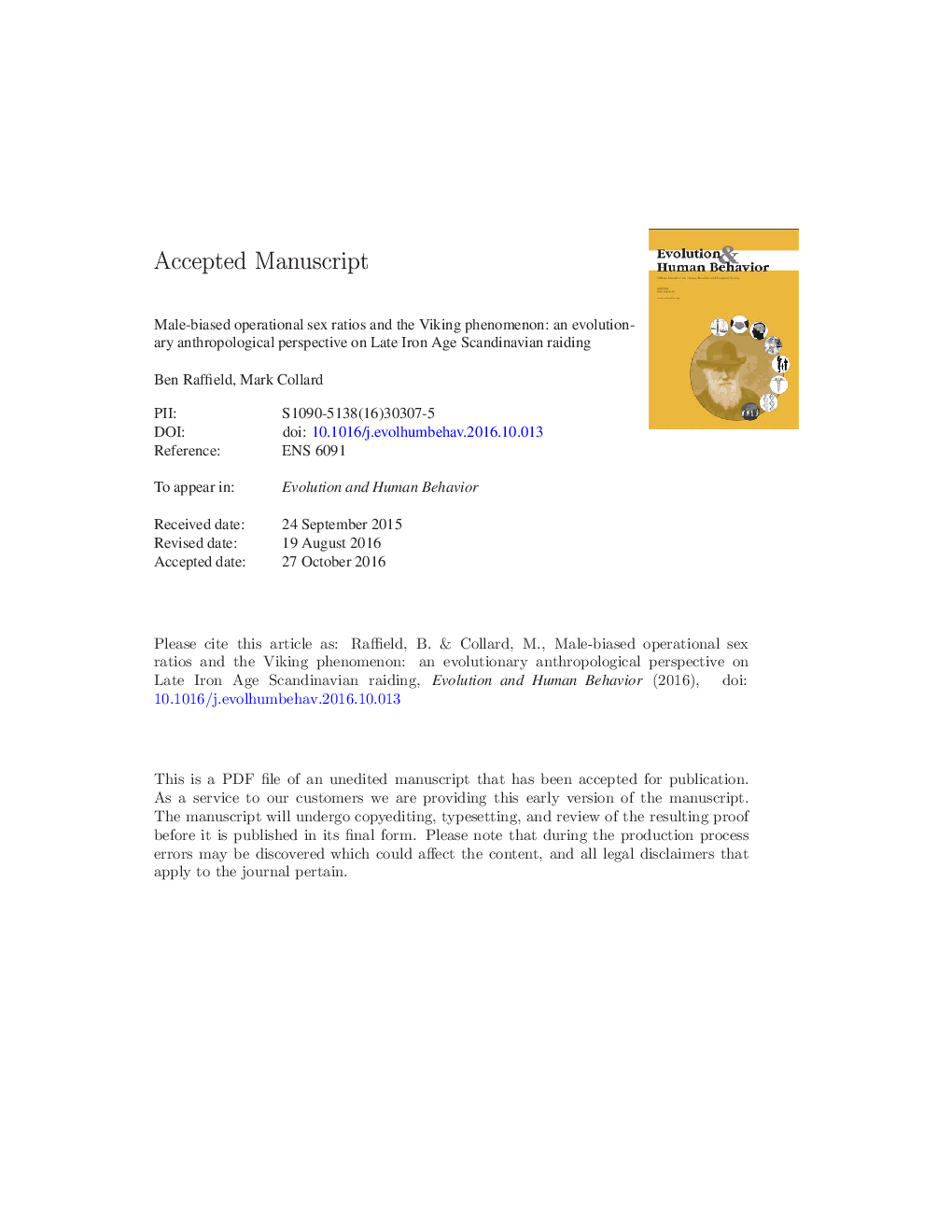| Article ID | Journal | Published Year | Pages | File Type |
|---|---|---|---|---|
| 5044773 | Evolution and Human Behavior | 2017 | 37 Pages |
Abstract
In this paper, we use a combination of evolutionary theory, ethnographic data, written sources, and archaeological evidence to develop a new explanation for the origins of Viking raiding. Our argument focuses on the operational sex ratio, which is the ratio of males to females in a society who are ready to mate at a given time. We propose that a combination of two practices - polygyny and concubinage - and the increase in social inequality that occurred in Scandinavia during the Late Iron Age resulted in a male-biased operational sex ratio. This would have created a pool of unmarried men motivated to engage in risky behaviours that had the potential to increase their wealth and status, and therefore their probability of entering the marriage market. With high-status men looking to instigate expeditions to acquire plunder and develop their reputations as war leaders, raiding represented a mutually beneficial means of achieving social advancement and success.
Related Topics
Life Sciences
Agricultural and Biological Sciences
Ecology, Evolution, Behavior and Systematics
Authors
Ben Raffield, Neil Price, Mark Collard,
